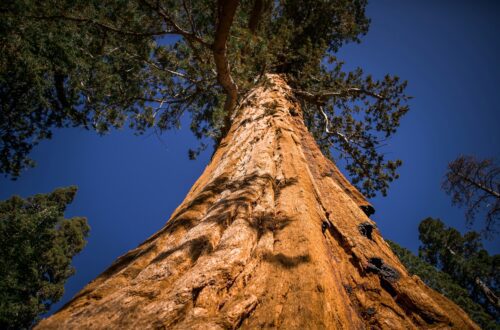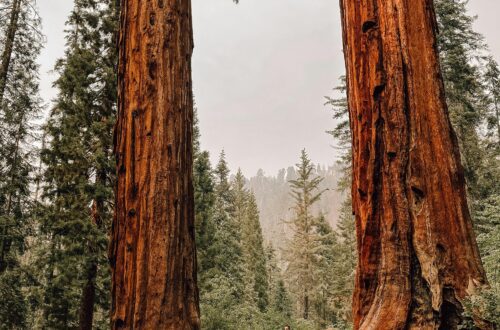
Getting to Know Joshua Tree: A Guide to the Unique National Park
Are you curious about what makes Joshua Tree National Park so special? Situated in Southern California, this desert wonderland is known for its namesake Joshua trees, striking rock formations, and the captivating meeting of two distinct ecosystems—the Mojave and Colorado deserts. But beyond its natural beauty, what can visitors expect when they visit? Whether you’re drawn to its iconic landscapes, starry night skies, or the outdoor adventures, this guide will give you a deep dive into what Joshua Tree has to offer.
What is Joshua Tree National Park Known For?
Joshua Tree National Park is famous for its unusual and stunning landscapes, characterized by its spiky Joshua trees, rugged rock formations, and vast desert expanses. The park, covering over 790,000 acres, sits at the confluence of the Mojave and Colorado deserts, creating a diverse environment of plants and animals. The towering boulder piles and the quirky Joshua trees provide endless photo opportunities, making this a haven for photographers, nature lovers, and outdoor adventurers alike.


The History and Cultural Significance of Joshua Tree
Long before it became a national park, Joshua Tree was inhabited by indigenous peoples, including the Serrano, Chemehuevi, and Cahuilla tribes. These groups relied on the desert’s resources for food, medicine, and shelter. The park also holds remnants of early 20th-century miners and ranchers who sought fortune in the area. Joshua Tree officially became a national monument in 1936, largely due to the efforts of activist Minerva Hoyt, who recognized the need to preserve the desert’s unique flora and fauna.
How to Get to Joshua Tree
Joshua Tree is accessible by car, with three main entrances: the West Entrance in Joshua Tree Village, the North Entrance in Twentynine Palms, and the South Entrance off I-10 near Cottonwood Spring. The park is about a two-hour drive from Los Angeles and three hours from San Diego, making it an easy road trip destination for Southern California residents. If you’re flying in, the closest airport is Palm Springs International Airport, about an hour’s drive from the park. Car rentals through services like DiscoverCars provide the flexibility to explore the area at your own pace.

Best Time to Visit Joshua Tree
While Joshua Tree is open year-round, the best times to visit are during the spring (March to May) and fall (October to November). During these months, daytime temperatures are mild, making it perfect for hiking, rock climbing, and sightseeing. Summers in Joshua Tree can be scorching, with temperatures often exceeding 100°F (38°C), while winter nights can be quite chilly, occasionally dipping below freezing. Spring is especially beautiful, as wildflowers bloom and the desert comes alive with color.
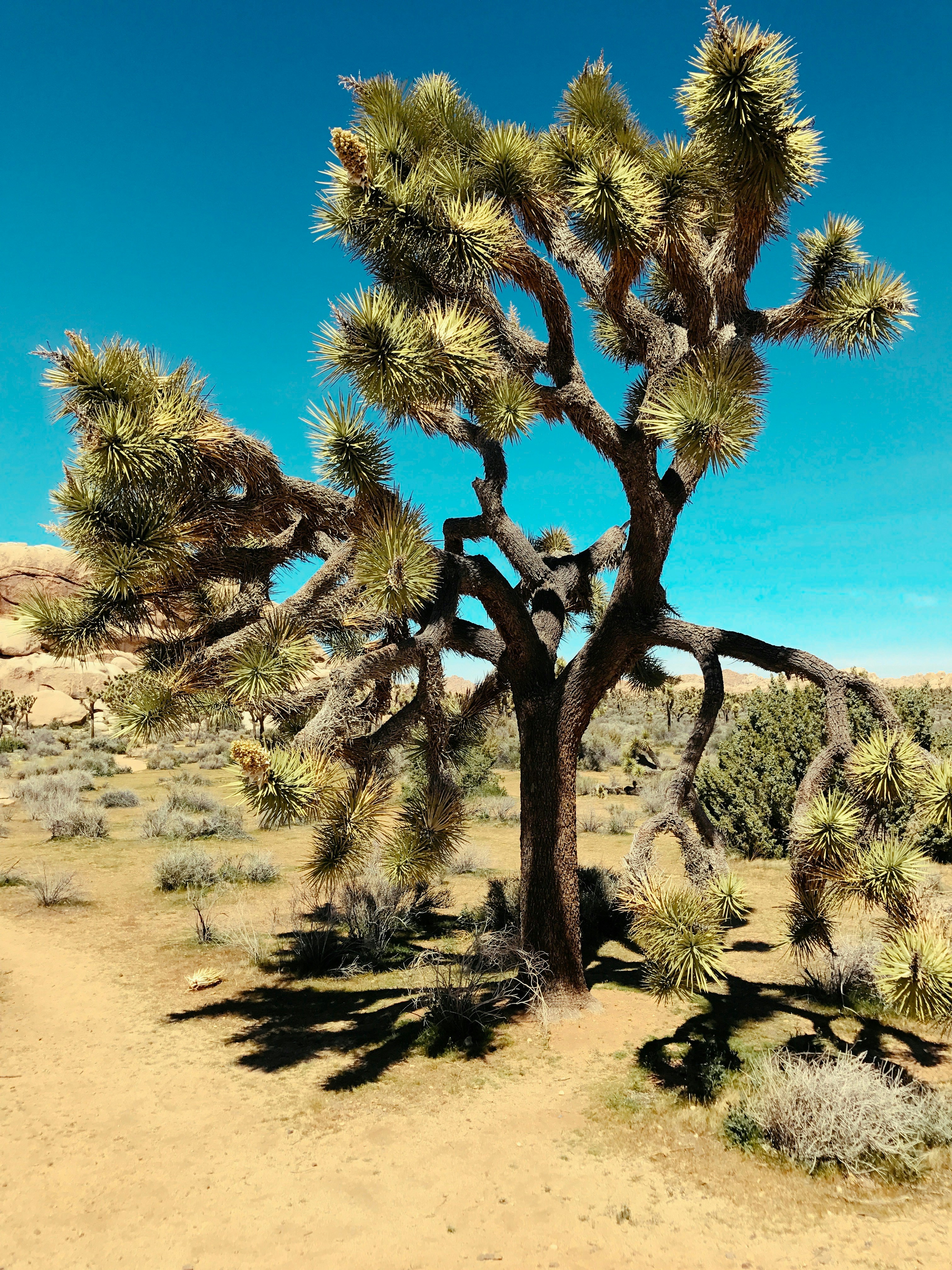
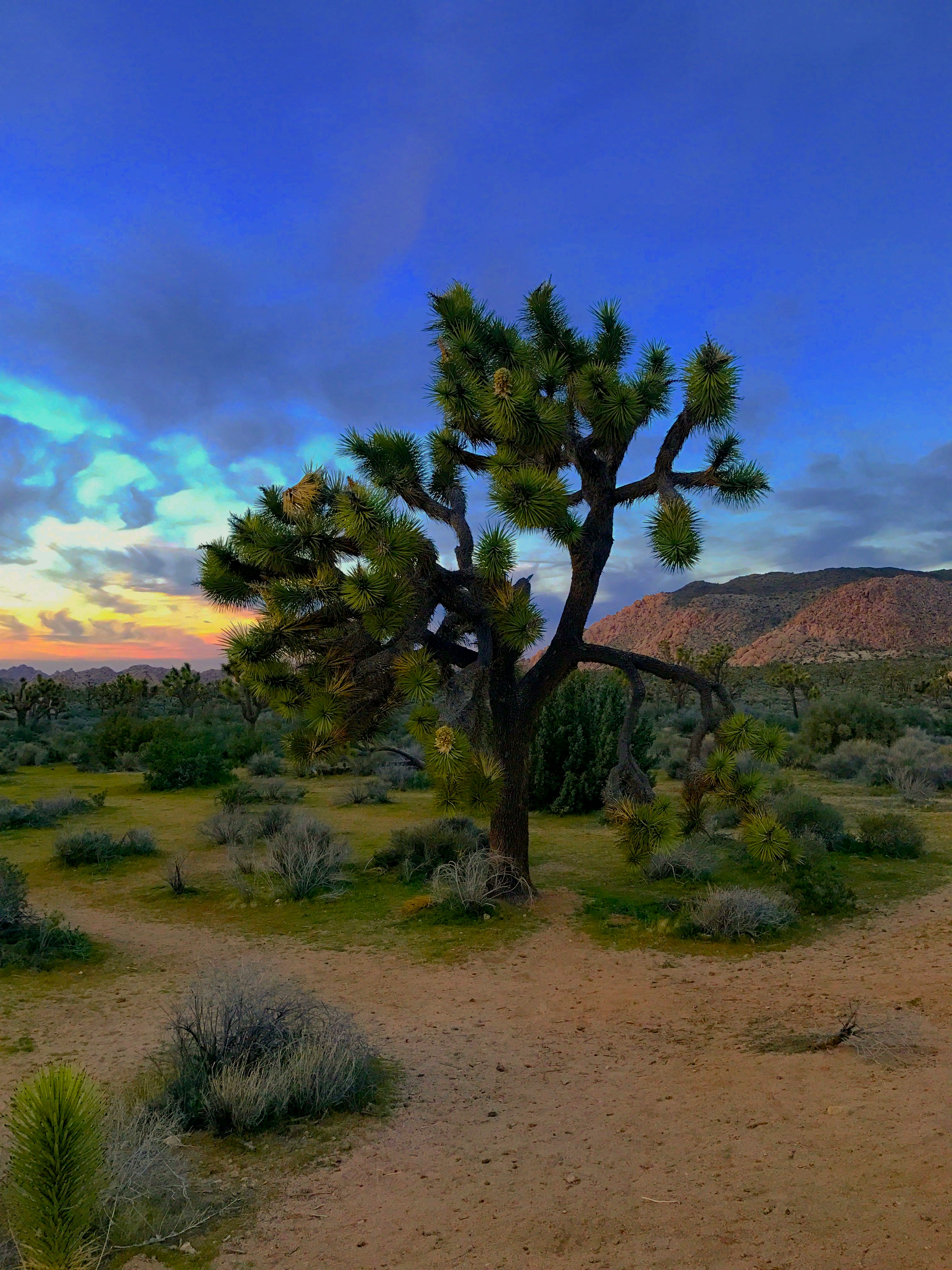
Top Attractions in Joshua Tree
Joshua Tree offers a variety of attractions for every type of visitor. Hidden Valley is one of the most popular areas, known for its short, scenic hiking trail surrounded by massive boulders. Keys View provides breathtaking panoramic views of the Coachella Valley and, on a clear day, you can even see Mexico. For history buffs, Barker Dam—built by early cattle ranchers—offers a glimpse into the area’s past. Rock climbers flock to the Skull Rock area, where iconic rock formations challenge climbers of all skill levels.
Hiking in Joshua Tree: Must-Try Trails
With over 250 miles of trails, Joshua Tree offers hikes for everyone. The Hidden Valley Trail is a one-mile loop that takes you through a scenic boulder-enclosed valley, perfect for families or beginners. For more experienced hikers, the Ryan Mountain Trail offers a moderately strenuous three-mile hike with panoramic views from the summit. If you’re up for a challenge, the Lost Horse Mine Trail is a 6.5-mile trek that leads to an old gold mine, offering a combination of history and stunning desert views.

Stargazing at Joshua Tree
One of the highlights of Joshua Tree National Park is its spectacular night skies. Far from the light pollution of major cities, the park is an excellent spot for stargazing. The best time for stargazing is during a new moon, when the skies are darkest. Be sure to bring a blanket or chair and head to one of the park’s many pullouts or camping areas for an unforgettable view of the Milky Way, planets, and even shooting stars. If you’re a fan of astrophotography, this is one of the best spots in Southern California to capture the night sky.


Camping in Joshua Tree
Joshua Tree has nine established campgrounds, with most offering a rustic desert camping experience. Popular campgrounds like Jumbo Rocks and Black Rock fill up quickly during peak seasons, so reservations are recommended. Most campgrounds offer basic amenities such as picnic tables and fire rings, but there is no running water, so you’ll need to bring plenty of your own. Camping under the stars in Joshua Tree is a bucket-list experience, offering solitude, tranquility, and stunning views of the desert landscape.
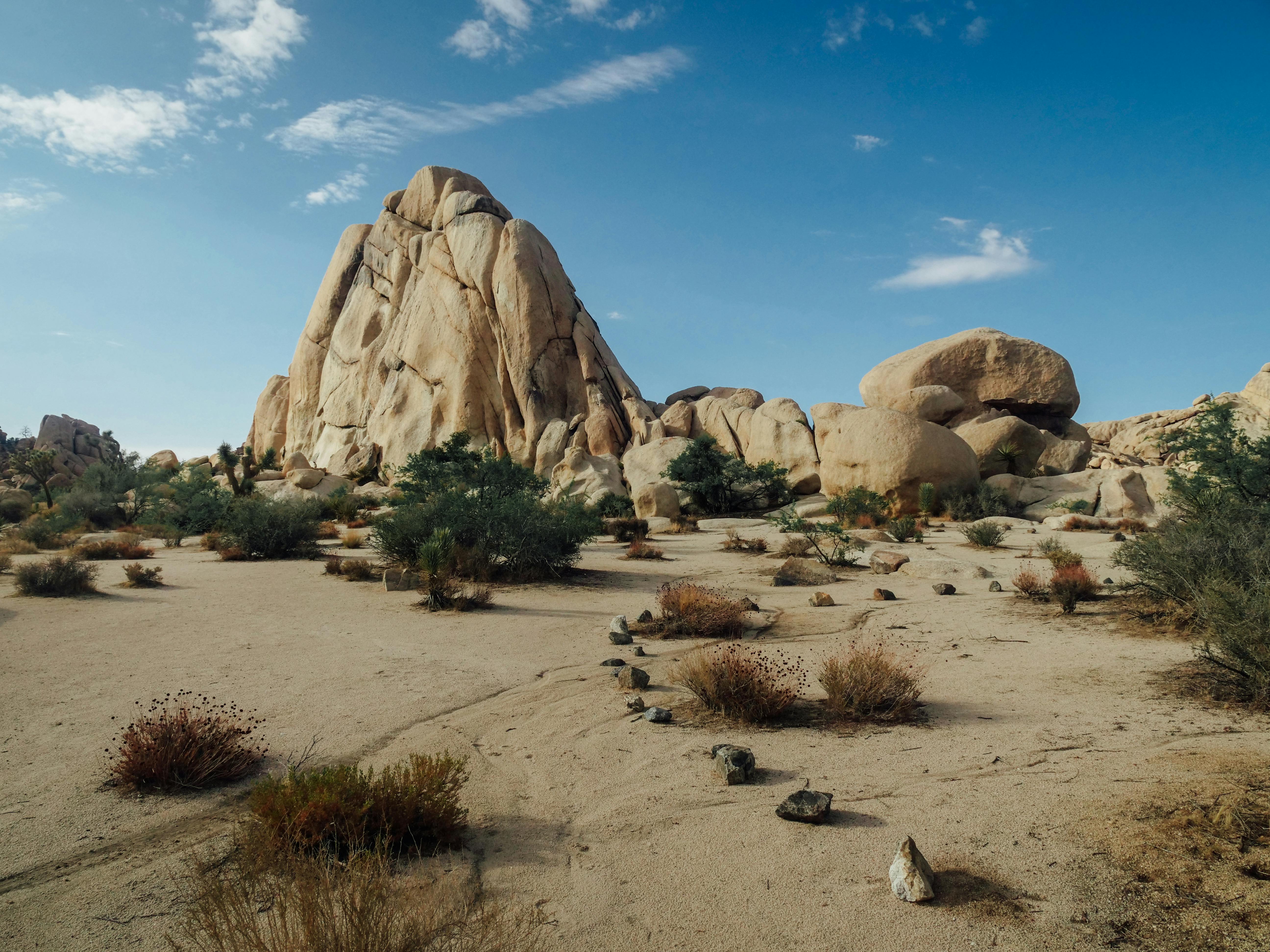
Rock Climbing in Joshua Tree
Joshua Tree is a mecca for rock climbers, with thousands of climbing routes ranging from beginner to expert levels. The park’s unique granite formations, with their rough texture, provide excellent grip for climbers. Areas like Intersection Rock, Echo Cove, and Indian Cove are popular climbing spots, offering a variety of routes. Even if you’re not a climber, watching others tackle these challenging ascents is an exciting way to spend an afternoon. If you’re interested in learning, many local companies offer guided climbing tours for all skill levels.


Wildlife in Joshua Tree
The desert may seem barren at first glance, but Joshua Tree is home to a wide array of wildlife. Common sightings include desert tortoises, bighorn sheep, and a variety of reptiles. Birdwatchers will enjoy spotting red-tailed hawks, golden eagles, and great horned owls. If you’re lucky, you might even catch a glimpse of the elusive bobcat or coyote. Remember, wildlife is more active during the cooler parts of the day, so early morning or late afternoon hikes offer the best chances of sightings.

Photography Tips for Joshua Tree
Joshua Tree is a photographer’s dream, with its striking landscapes and unique lighting. The best times for photography are during the “golden hours” just after sunrise or just before sunset when the light is soft and warm. The Cholla Cactus Garden is a popular spot for sunrise photography, while Keys View provides stunning sunset vistas. If you’re into night photography, Joshua Tree’s dark skies are perfect for capturing the Milky Way or experimenting with long-exposure shots of the stars.


How to Stay Safe in Joshua Tree
While Joshua Tree is a relatively accessible park, there are some precautions to keep in mind. The desert environment can be harsh, so always carry plenty of water, especially during the warmer months. It’s also important to wear appropriate clothing, including a hat and sunscreen, as there is little shade. Cell phone reception is spotty, so make sure to download maps and let someone know your plans before heading into the park. If you’re hiking, stick to marked trails and avoid venturing off into the desert alone.


Where to Stay Near Joshua Tree
While there are no hotels within the park, the nearby towns of Joshua Tree Village, Twentynine Palms, and Yucca Valley offer a variety of accommodation options. From cozy Airbnbs to charming desert hotels, you’ll find plenty of places to rest after a day of exploring. For a luxurious stay, consider booking a stay at the Joshua Tree Retreat Center, which offers beautiful views and a peaceful environment. Check out Booking.com or Trip.com for a range of options to suit your budget and preferences.
Things to Do Nearby Joshua Tree
Beyond the park itself, there are several attractions in the surrounding area. Pioneertown, a former Old West movie set, is a fun spot for families, with live reenactments and quirky shops. If you’re interested in art, the Noah Purifoy Outdoor Desert Art Museum is a unique experience, featuring large-scale sculptures in the open desert. For those looking to relax, a visit to the nearby Desert Hot Springs is a must. You can soak in natural hot mineral pools while enjoying the serene desert surroundings.
How to Get to Joshua Tree
Joshua Tree is accessible by car, with the nearest airport being Palm Springs International Airport, about an hour away. If you’re coming from Los Angeles, it’s a roughly two-hour drive via I-10. Renting a car is highly recommended for visiting Joshua Tree, as public transportation is limited. Services like DiscoverCars offer convenient and affordable rental options, allowing you to explore the park and surrounding areas at your own pace. Alternatively, if you’re coming from farther afield, Las Vegas and Phoenix are both about four hours away by car.
Joshua Tree National Park offers something for everyone, from breathtaking landscapes and challenging hikes to serene stargazing and wildlife viewing. Whether you’re an outdoor enthusiast or simply seeking a peaceful desert escape, getting to know Joshua Tree will undoubtedly leave you in awe.


